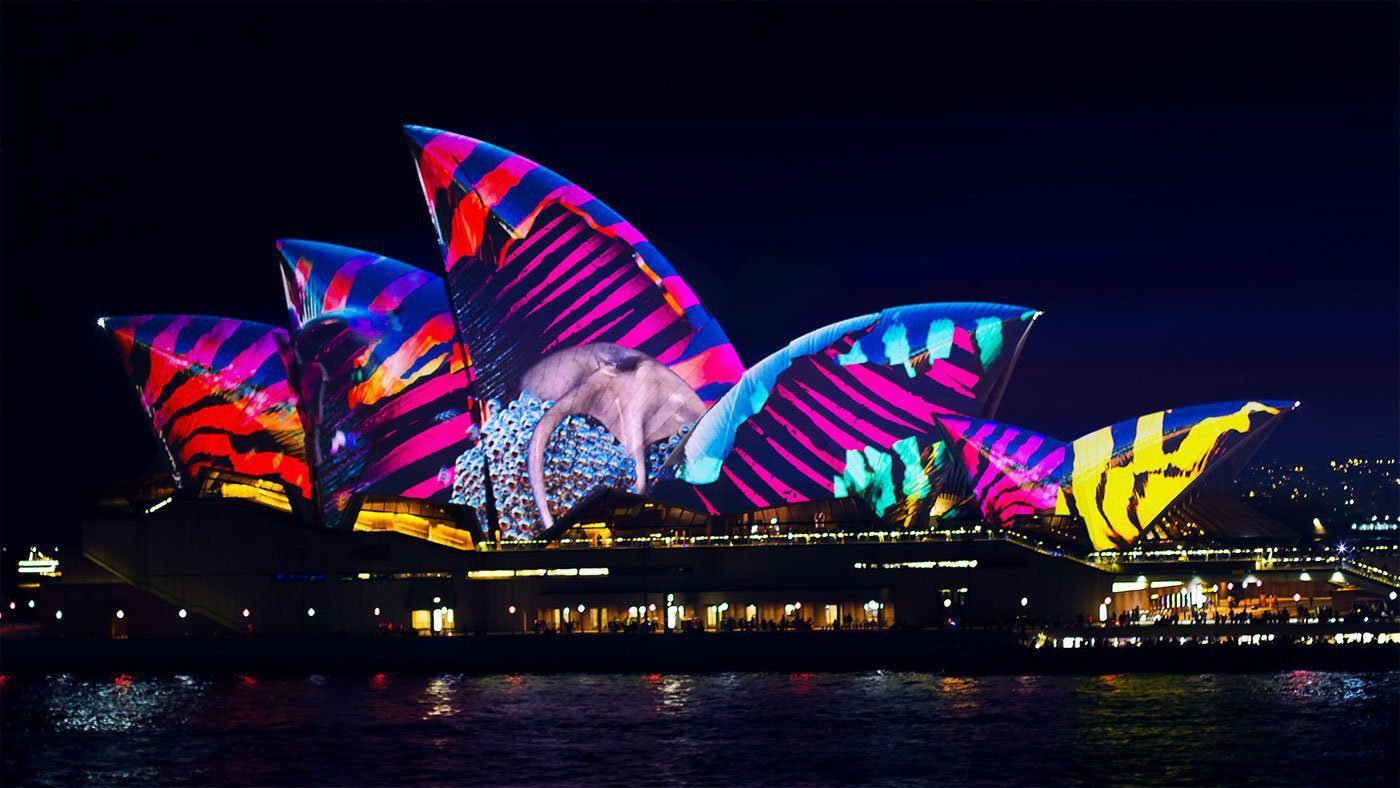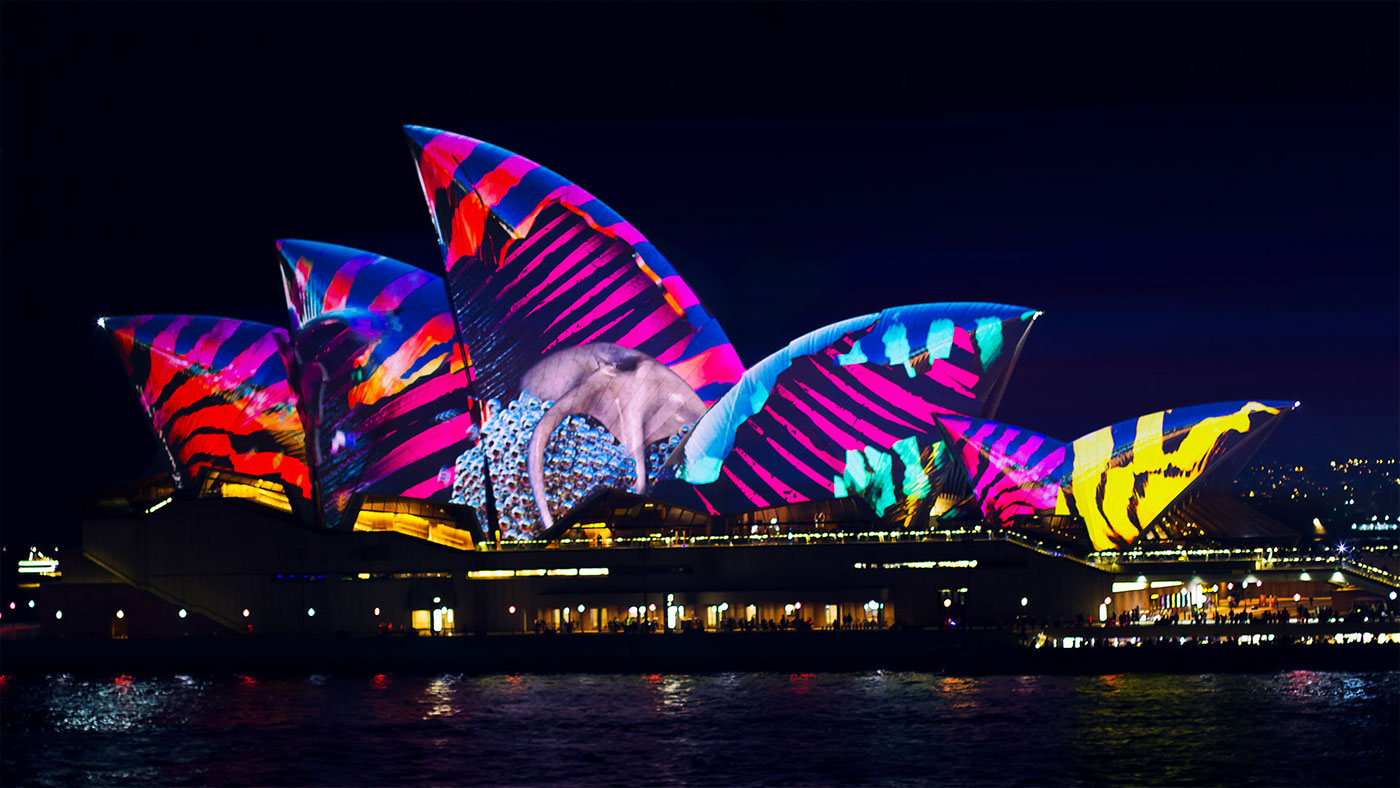Illuminating Artistry: A Guide to Projection Mapping

Imagine standing at the foot of a magnificent building, suddenly transformed into a vivid tapestry of colors and stories, all through the magic of projection mapping. A few years ago, I witnessed a jaw-dropping holiday projection on my neighbor’s house that turned simple lights into a mesmerizing animated display. This sparked my curiosity and led me down a path of discovery about this immersive technology. In this post, we’ll delve into the fascinating realm of projection mapping, exploring its uses, techniques, and the gear you’ll need to bring your visions to life.
A Guide to Projection Mapping
What is Projection Mapping?
Definition and Explanation
Projection mapping is a fascinating technology that transforms ordinary surfaces into dynamic visual displays. It involves projecting images or videos onto 3D objects, making them come alive. Imagine a building that looks like it is dancing or a wall that tells a story. This technique uses specialized software to map the projected content precisely onto the surface, creating an immersive experience.
Brief History of Development
Projection mapping has roots in the early 1960s but gained popularity in the 2000s. Artists and advertisers began experimenting with it, pushing the boundaries of creativity. One notable milestone was the 2005 projection on the Sydney Opera House, which showcased its potential for large-scale events. Since then, it has evolved with technological advancements, making it more accessible and versatile.
The history of projection mapping has transformed dramatically, influencing various applications in events and immersive experiences. Originating as a simple visual technique, it now captivates audiences worldwide by transforming large buildings and home surfaces into dynamic canvases. To achieve stunning visuals, understanding the right equipment and methods is crucial. By leveraging advanced techniques, you can create captivating projections that engage viewers and enhance any environment. Embrace the remarkable potential of projection mapping to elevate your visual storytelling today.
Popular Uses in Culture and Advertising
Art Installations: Artists use projection mapping to create stunning visual experiences in galleries and public spaces.
Advertising: Brands leverage this technology to captivate audiences with eye-catching displays, often during events or product launches.
Events: Concerts and festivals frequently incorporate projection mapping to enhance performances, creating a multi-sensory experience.
Have you ever seen a building transformed into a canvas? That’s the magic of projection mapping. It’s not just about visuals; it’s about storytelling and engagement. The possibilities are endless, and as technology advances, so will the creativity behind it.
Applications of Projection Mapping for Events

Types of Events Suitable for Projection Mapping
Projection mapping is a versatile tool that can elevate various events. Here are some types where it shines:
Concerts and Festivals: Imagine vibrant visuals dancing across a stage. It adds depth and excitement.
Corporate Events: Enhance presentations with dynamic backdrops. It keeps the audience engaged.
Art Exhibitions: Transform static displays into moving art. It uniquely captivates viewers.
Weddings: Create personalized experiences. Who wouldn’t want their love story projected during the reception?
Case Studies Highlighting Successful Implementations
Let’s look at some inspiring examples:
Mapping the Sydney Opera House: This iconic venue used projection mapping for its New Year’s Eve celebrations, stunning audiences with breathtaking visuals.
Interactive Installations: A tech company launched a product with a 3D projection that allowed guests to interact with the visuals. It was a hit!
Enhancing Brand Experiences and Product Launches
Projection mapping can transform how you present your brand and create memorable experiences. Think about it: how often do you remember a standard presentation versus a visually stunning one?
When launching a product, you want to capture attention. A well-executed projection can do just that. It’s not just about showing a product but telling a story. You can immerse your audience in the brand’s narrative, making them feel part of something bigger.
In a world where first impressions matter, projection mapping offers a unique way to stand out. It’s about creating moments that linger in the minds of your audience. Are you ready to explore this innovative approach for your next event?
Illuminating Artistry: A Guide to Projection Mapping

How to Use Projection Mapping at Your Home
Projection mapping is a fascinating way to transform your living space. It can turn ordinary walls into dynamic canvases. But how do you get started? Let’s break it down step-by-step.
Step-by-Step Guide to House Projection Mapping
Choose Your Space: Identify where you want to project. A blank wall or even furniture can work.
Design Your Content: Create visuals that resonate with you. Use software like Adobe After Effects or free options like Blender.
Set Up Your Projector: Position it at the right angle and ensure it’s bright enough for your space.
Test and Adjust: Play your content. Adjust the projector until the image fits perfectly.
Selecting Projectors and Software
Not all projectors are created equal. For projection mapping, you need one that offers high resolution and brightness. Look for projectors with at least 3000 lumens. Software is equally essential. Programs like MadMapper and Resolume are popular for their user-friendly interfaces.
Creative Ideas for Personalizing Your Space
Seasonal Themes: Change your projections with the seasons. Think of autumn leaves in fall or snowflakes in winter.
Artistic Displays: Project famous artworks or your creations to give your home a gallery feel.
Interactive Experiences: Use sensors to create interactive projections that respond to movement.
Imagine walking into a room that changes its mood with the flick of a switch. Projection mapping makes that possible. It’s not just about visuals; it’s about creating an experience. So, why not give it a try?
Choosing the Right Projectors for Projection Mapping

Key Features to Look For in Projectors
When selecting a projector for projection mapping, you need to consider several key features:
Brightness: Look for a projector with high lumens. This ensures your visuals pop, even in well-lit environments.
Resolution: A higher resolution means more explicit images. Aim for at least 1080p for stunning detail.
Throw Ratio: This determines how far the projector needs to be from the surface. A short-throw projector is often ideal for tight spaces.
Color Accuracy: Rich, vibrant colors make your projection stand out. Check reviews for color performance.
Brands and Models That Excel in Projection Mapping
Some brands are known for their quality in projection mapping:
Barco: Their projectors are renowned for brightness and reliability.
Panasonic: Offers high-end models with excellent color reproduction.
Christie: Known for powerful projectors that excel in large-scale events.
Budget Considerations and ROI for Rental vs. Purchase
Deciding whether to rent or buy a projector can be tricky. Consider these points:
Rental: Great for one-time events. It saves you from high upfront costs.
Purchase: Better for frequent use. Over time, buying can be more cost-effective.
Think about how often you’ll use it. If projection mapping is a regular part of your events, investing in a quality projector could yield a better return on investment (ROI).
Ultimately, the right projector can transform your vision into reality. It’s not just about the technology; it’s about creating an immersive experience that captivates your audience.
Immersive Experiences Through Interactive Projection Mapping

Exploring Interactive Elements in Projection Mapping
Have you ever wondered how a simple wall can transform into a vibrant canvas? Interactive projection mapping allows you to do just that. It combines visual art with technology, creating a dynamic experience. Imagine walking past a building and seeing it come alive with colors and shapes that react to your movements. This is the magic of interactivity!
Technologies Used to Create Interactivity
To achieve these stunning effects, various technologies are employed.
Motion sensors detect your movements, allowing the projection to change in real-time.
Software: Programs like MadMapper, Resolume, or TouchDesigner help artists design and control the projections.
Projectors: High-quality projectors are essential for clarity and brightness.
Each element plays a crucial role in crafting an immersive experience. Without them, the magic would simply fade away.
Examples of Successful Installations
Many installations around the world showcase the power of interactive projection mapping. For instance, the “Light Festival” in Ghent features buildings that respond to viewers, creating a unique experience for each visitor. Another example is the “Museum of the Future” in Dubai, where exhibits come alive through interactive projections. These installations not only entertain but also educate, making them memorable.
As you can see, interactive projection mapping is more than just a visual spectacle. It’s a way to engage audiences, making them part of the experience. Isn’t that fascinating?
Illuminating Artistry: A Guide to Projection Mapping
Techniques for Effective Projection Mapping

Understanding the Basics
To master projection mapping, you need to grasp its fundamental principles. At its core, projection mapping transforms surfaces into dynamic displays. Imagine turning a plain wall into a vibrant canvas. This technique requires precise alignment and an understanding of the surface’s contours.
Surface Preparation: Ensure the surface is clean and free of obstructions.
Lighting Conditions: Control ambient light to enhance visibility.
Content Design: Create visuals that complement the surface’s shape.
Artistic Techniques
Two key artistic techniques stand out in projection mapping: warp and blend.
Warping adjusts the projected image to fit the surface’s geometry. Think of it as molding clay; you shape the content to match the contours. On the other hand, blending involves merging multiple images seamlessly. This technique creates a cohesive visual experience, making it feel like one fluid piece.
Choosing the Right Software
Software selection is crucial for successful projection mapping. You want tools that simplify the process and enhance creativity. Some popular options include:
MadMapper: Great for beginners and professionals alike.
Resolume: Perfect for live performances and events.
TouchDesigner: Ideal for interactive installations.
Each software has unique features, so explore them to find what best suits your project. Remember, the right tools can make all the difference.
Illuminating Artistry: A Guide to Projection Mapping

Projection Mapping Software
Projection mapping has revolutionized how we create immersive experiences, whether at live events or in the comfort of our homes. Selecting the right software is crucial to achieve captivating visuals that transform surfaces into dynamic canvases. Two of the most popular options in the market are Resolume and MadMapper, each offering unique features and pricing structures. Resolume is ideal for live performances, providing powerful real-time video mixing and effects. Its user-friendly interface allows for seamless integration of audio-visual elements.
Conversely, MadMapper excels in mapping projections onto complex surfaces, making it a favorite for artistic installations. Both tools have robust capabilities; other options include Heavy M, Arkaos, and Scalable, but the best choice depends on your specific needs and budget. While Resolume has a steep learning curve, it rewards users with advanced features, whereas MadMapper is more accessible for beginners. Ultimately, evaluate your goals to select the ideal software for stunning projection mapping that captivates your audience.
Conclusion: Your Journey into Projection Mapping Awaits
As we wrap up, let’s take a moment to reflect on the importance and versatility of projection mapping. This technology is not just a trend; it’s a powerful tool that can transform ordinary spaces into extraordinary experiences. Whether you’re illuminating a building or creating an immersive environment for an event, projection mapping opens up a world of creative possibilities.
Have you thought about how you might use projection mapping in your own projects? Don’t hesitate to experiment! Start small—perhaps with your home or a community event. The beauty of this medium is that it encourages innovation. You can create stunning visuals that captivate audiences and leave a lasting impression.
Looking ahead, projection mapping’s future is bright. As technology advances, we can expect even more interactive and engaging experiences. So, are you ready to embark on this exciting journey? Your creativity is the only limit!
TL;DR: Projection mapping is a transformative audiovisual technique that can be used for various occasions. It creates dynamic experiences in homes, buildings, and more. Learn how to effectively utilize this innovative art form for your events and projects.
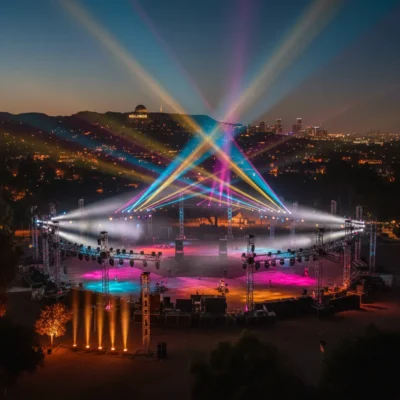
Let There Be Light: An LA Insider’s Guide to Event Lighting Rentals
Event lighting is crucial for creating memorable experiences in Los Angeles. This post covers the importance of professional lighting, various rental options, and tips for navigating the rental process to ensure your event shines.
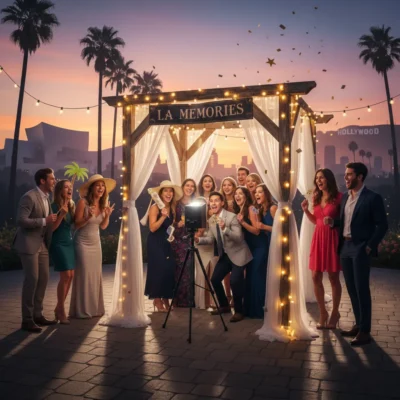
Why Photo Booth Rental in Los Angeles Makes Every Event Unforgettable
Discover the exciting options for photo booth rentals in Los Angeles, including Open Air, Glam, and 360 Video booths. Learn about pricing, features, and tips for booking the perfect booth for your event, with insights on local favorites like Tiktok Photo Booth and Angels Music Productions.
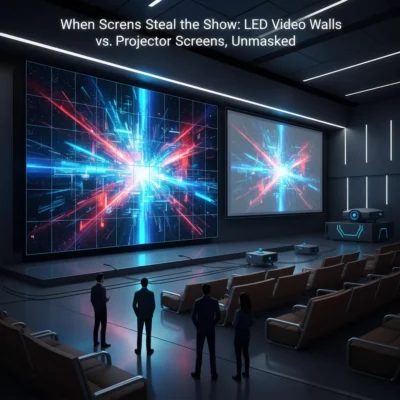
LED Video Walls vs. Projector Screens, Unmasked
LED video walls outperform traditional projector screens in brightness, visual impact, and long-term cost-effectiveness. This post shares real event stories and expert insights to help you choose the best display technology for your next event.
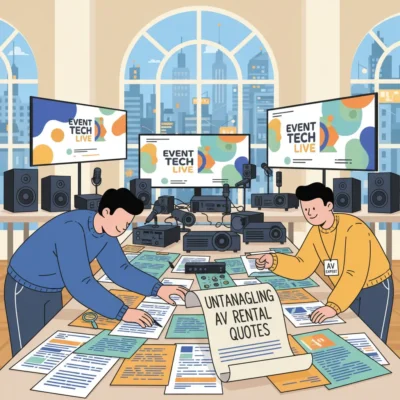
AV Rental Quotes: Insider Secrets to Getting the Best Deal
Understanding AV rental quotes is crucial for event planners to avoid unexpected costs. This post explains how rental duration, labor, and hidden fees affect pricing, and offers tips for securing the best value.
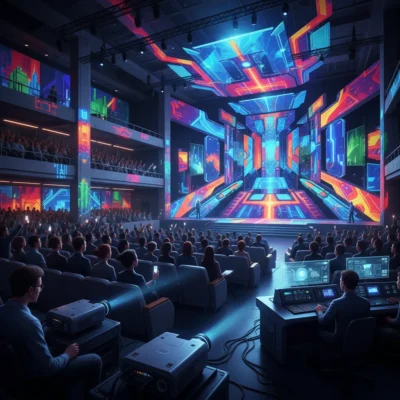
Seeing Double: The Magic of Projection Mapping in Hybrid Events
Projection mapping is a powerful tool for hybrid events, bridging the gap between in-person and remote audiences by creating shared visual experiences. This post highlights its benefits, techniques, and the importance of planning and flexibility.
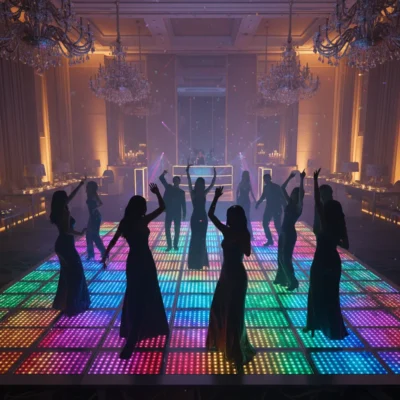
Dancing on Light: The Real Scoop on LED Dance Floor Rental for Your Next Bash
LED dance floors can elevate any event with their customizable features and interactive effects. This post discusses their benefits, pricing, and installation tips to ensure a memorable experience for guests.
Other Services We Provide:
Audio Visual, Special wedding Effects, Event Wedding Lighting, Event Musicians, DJ, MC, Photo Booth, 360 Video Booth, Photo Booth Rental, Halo Photo Booth, Photo Booth Rental Near Me, tiktok Video Booth, Face Painting, Temporary Custom Tattoos, Wireless Headphones Party, LED Dance Floor, Projection Mapping, Projector And Screen rental, LED Robot, Bar Mitzvah DJ, Bat Mitzvah DJ, Event Decoration, Photographer Los Angeles, Videographers.

